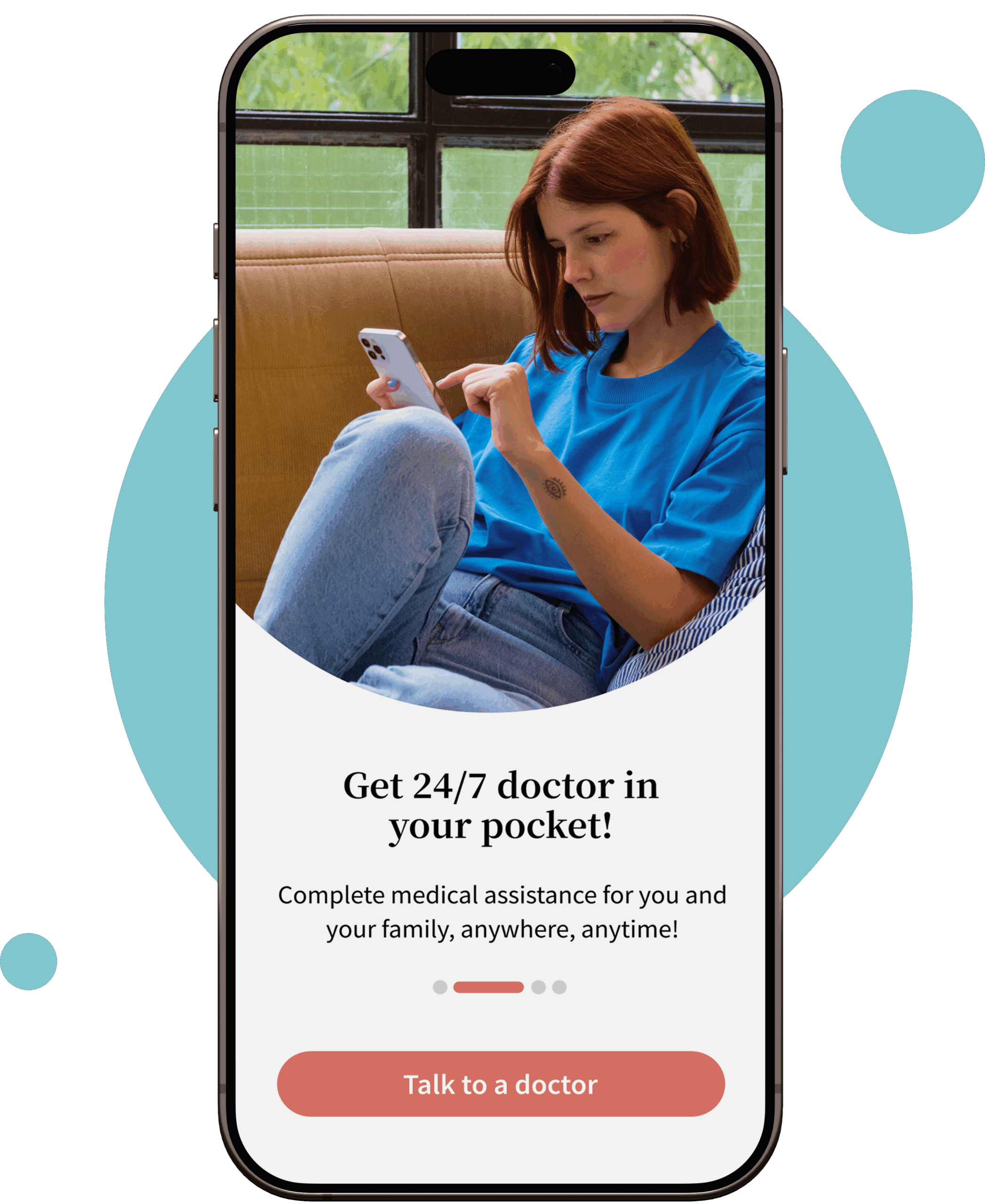
Get Meloxicam Prescription Online
Meloxicam is an NSAID, a Non-steroidal anti-inflammatory drug, used to treat pain and inflammation in osteoarthritis and rheumatic diseases. Obtaining a Meloxicam prescription online is simple; visit Your Doctors Online and connect with a doctor anytime, anywhere. Please know that a Meloxicam refill will only be provided after a consultation with our doctor and if the medication is appropriate and safe.
What is Meloxicam?
Meloxicam is classified as an NSAID, which falls under the class of drugs that help relieve pain and inflammation. By belonging to this therapeutic class, meloxicam shares similar pharmacological properties and mechanisms of action with other NSAIDs, such as ibuprofen and Naproxen. Meloxicam is frequently marketed and sold under the widely recognized brand name “Mobic.”
Besides Meloxicam, several other medications fall into this class and share similar properties and therapeutic effects. These drugs include Diclofenac, Ibuprofen, Naproxen, and Celecoxib. Ibuprofen, like Meloxicam, is widely used for its anti-inflammatory and analgesic properties.
Uses of Meloxicam
Healthcare professionals widely prescribe Meloxicam to manage various conditions, including arthritis, musculoskeletal disorders, and other inflammatory conditions.
How does it work?
Meloxicam works by inhibiting the enzymes cyclooxygenase-1 (COX-1) and cyclooxygenase-2 (COX-2), which are involved in synthesizing prostaglandins. Prostaglandins contribute to pain, fever, and inflammation. Meloxicam helps to alleviate pain and inflammation by reducing the production of prostaglandins.
How to take Meloxicam?
It is available in tablet form, making it convenient for oral administration. The recommended dosing frequency for meloxicam is typically once daily. This means it is generally advised to take meloxicam once a day, simultaneously each day, as prescribed by your healthcare provider.
What is Meloxicam?
Common side effects of Meloxicam may include:
- Nausea
- Diarrhea
- Dizziness
- Heartburn
- Mild skin rash
- Upset stomach
Serious side effects of Meloxicam may include:
- Kidney
- Gastric bleeding
- Increased risk of heart attack
- Ulcers
- Allergic reactions
- Increased risk of heart attack or stroke
How to get prescription online?
Get prescription online in three easy steps
1
Describe your issue
Download our app, register and tell us about your medical issue to get started.
- Osteoarthritis
- Anemia
- STD
- UTI
- Skin
- Covid
2
Chat with a doctor
Connect with a board-certified doctor. You can chat, send pictures and videos.
Dr. Nicole, I have severe joint pain; I feel better after taking Meloxicam. Can you give me a Meloxicam refill?
3
Get prescription
Our online doctors can help you with your medical issues and give you prescriptions.
Prescription
- Meloxicam 7.5 mg tablet
- Take one tablet once daily.
Send Prescription
Precautions and contraindications
- Other nonsteroidal anti-inflammatory drugs (NSAIDs), blood thinners, certain antidepressants, and blood pressure medications may interact negatively with meloxicam.
- Meloxicam, like other nonsteroidal anti-inflammatory drugs (NSAIDs), may increase the danger of cardiovascular problems. People with heart problems may be at a higher risk for this.
- Intestinal bleeding, ulceration, and perforation are all made more likely by NSAID use. People over the age of 65 and those with a history of stomach or intestinal ulcers or bleeding are at increased risk.
- Renal impairment can be brought on by or made worse by Meloxicam. People who already have kidney disease should use it with caution.
- The risk of an allergic reaction to Meloxicam may be higher for people who have previously experienced adverse reactions to aspirin or other NSAIDs, such as asthma.
- It is recommended that pregnant women avoid taking Meloxicam after the second trimester. It is generally not recommended during breastfeeding.
- The elderly may be more susceptible to the adverse effects of NSAIDs, including an increased risk of gastrointestinal bleeding and renal impairment.
- Meloxicam shouldn’t be taken by anyone who has ever had an adverse reaction to it, aspirin, or any other nonsteroidal anti-inflammatory drug (NSAID).
FAQs About Meloxicam
Can I buy Meloxicam over the counter?
No, Meloxicam requires a prescription and is not available over the counter. You can get a Meloxicam prescription or refill by downloading Your Doctors Online app describing your issue, and our qualified professional will prescribe you the medication if needed.
How long does it take Meloxicam to work?
The onset of action for meloxicam varies, but you may feel some relief within a few hours to a couple of days after starting the medication.
How can I refill my Mobic prescription?
You can refill your Meloxicam (Mobic) prescription by downloading the Your Doctors Online app. You can describe your problem to our qualified healthcare provider, and he will determine whether you need it or not.
What happens if I miss a dose of Mobic?
If you have missed a dose of Mobic, you can take it when you remember. However, if it is time for your next dose, skip the missed dose and continue with your regular dosing schedule. Do not double the dose to make up for a missed one.
Who should not take Mobic?
Individuals who have a history of allergic reactions to Meloxicam or other NSAIDs, those with a history of gastrointestinal bleeding or ulcers, and those with severe kidney problems should avoid taking Meloxicam.
What happens if I take too much Mobic?
Overdosing on Meloxicam can lead to serious health issues, including gastrointestinal bleeding, kidney problems, and ulcers. Immediately see a doctor if you think you have overdosed on Mobic.
What is the typical starting dose of Meloxicam?
Usually, the starting dose of Meloxicam for adults is 7.5 mg once daily. Your personalized dosing schedule is based on your individual condition, physiology, and response to the treatment.
Your Doctors Online uses high-quality and trustworthy sources to ensure content accuracy and reliability. We rely on peer-reviewed studies, academic research institutions and medical associations to provide up-to-date and evidence-based information to the users.
-Phindile Mkhatshwa
-brooke snow
-Okiti Stephanie
-ASIF Khan
-Chelsey
-edith bien aime
-Lesego Thejane
-Stephanie Brown
-kulwinder gill
-Elijah Mark
Get Started Today
Talk to online doctors now and get medical advice, online prescriptions, and referrals within minutes. On-demand healthcare services at your fingertips.





